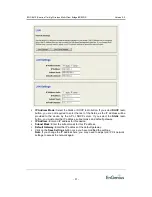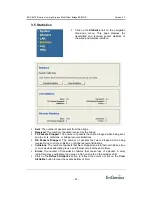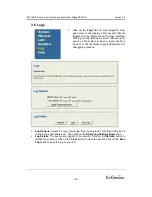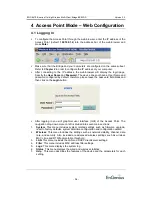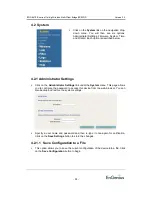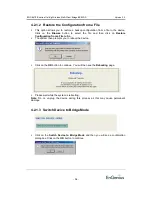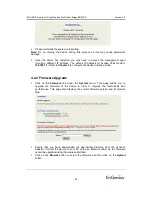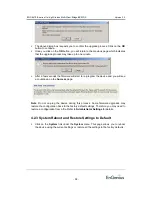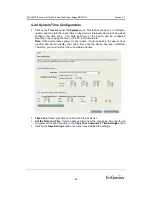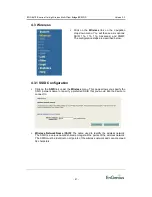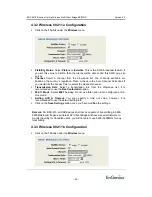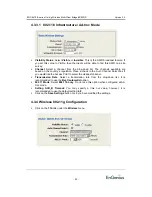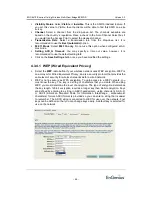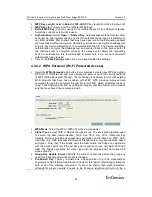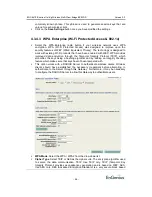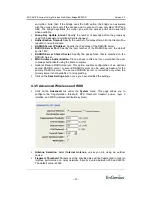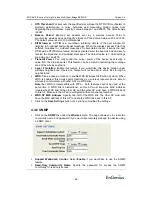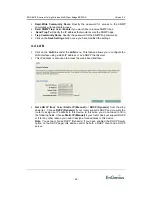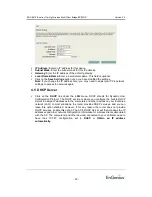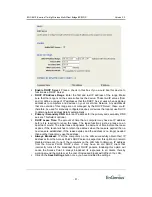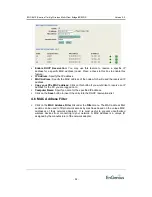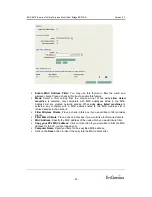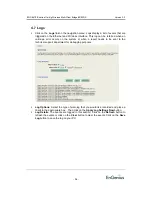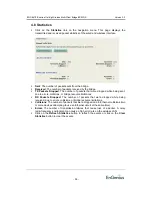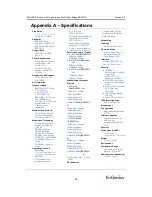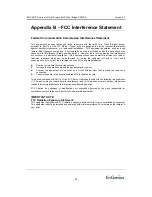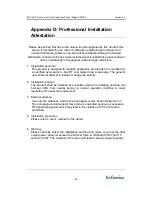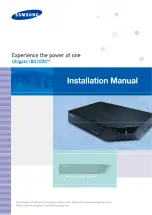
EOC-8610-S series 11a/b/g Wireless Multi-Client Bridge/AP/WDS
Version 2.2
-
45
-
WEP Key Length
: Select a
64-bit
or
128-bit
WEP key length from the drop-down list.
WEP Key 1-4:
You may enter four different WEP keys.
Default WEP Key:
You may use up to four different keys for four different networks.
Select the current key that will be used.
Authentication:
Select
Open
, or
Shared Key
. Authentication method from the drop-
down list. An open system allows any client to authenticate as long as it conforms to
any MAC address filter policies that may have been set. All authentication packets
are transmitted without encryption. Shared Key sends an unencrypted challenge text
string to any device attempting to communicate with the AP. The device requesting
authentication encrypts the challenge text and sends it back to the access point. If
the challenge text is encrypted correctly, the access point allows the requesting
device to authenticate. It is recommended to select Auto if you are not sure which
authentication type is used.
Click on the
Save Settings
button once you have modified the settings.
4.3.4.2 WPA Personal (Wi-Fi Protected Access)
Select
the
WPA-Personal
radio button if your wireless network uses WPA encryption.
WPA (Wi-Fi Protected Access) was designed to improve upon the security features
of WEP (Wired Equivalent Privacy). The technology is designed to work with existing
Wi-Fi products that have been enabled with WEP. WPA provides improved data
encryption through the Temporal Integrity Protocol (TKIP), which scrambles the keys
using a hashing algorithm and by adding an integrity checking feature which makes
sure that keys haven’t been tampered with.
WPA Mode
: Select the WPA / WPA2 from the drop-down list.
Cipher Type
: Select TKIP or AES as the cipher suite. The encryption algorithm used
to secure the data communication. TKIP. Use TKIP only. TKIP (Temporal Key
Integrity Protocol) provides per-packet key generation and is based on WEP. AES.
Use AES only. AES (Advanced Encryption Standard) is a very secure block based
encryption. Note that, if the bridge uses the AES option, the bridge can associate
with the access point only if the access point is also set to use only AES. TKIP and
AES. The bridge negotiates the cipher type with the access point, and uses AES
when available.
Group Key Update Interval
: Specify the number of seconds before the group key
used for broadcast and multicast data is changed.
Pre-Shared Key
: The key is entered as a pass-phrase of up to 63 alphanumeric
characters in ASCII (American Standard Code for Information Interchange) format at
both ends of the wireless connection. It cannot be shorter than eight characters,
although for proper security it needs to be of ample length and should not be a

